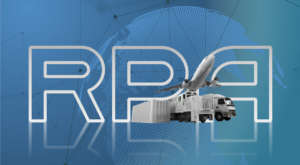To be successful, business leaders know they must balance people, processes, and technology. In the Digital Age, organizations tend to focus too much on technology and not enough on people and processes. To thrive in today’s business environment, decision-makers need to understand the symbiotic relationship between people, processes, and technology. Virender Jeet, Senior Vice President of Technology at Newgen Software Technologies Limited, notes, “In order to be truly digital and be connected, your underlying business processes play a key role.”[1] One of the best ways to link people, processes, and technology is through robotic process automation (RPA). Although some critics may scratch their heads wondering how people link with automated processes, mounting evidence reveals that RPA generally assumes tedious tasks once performed by humans but doesn’t eliminate their jobs. Conversely, RPA can make jobs more interesting and meaningful. Saugata Ghosh, a senior manager of digital services at Capgemini, explains, “Initially, everybody was after headcount reduction. Most people are telling us now that their focus is on reducing errors, improving compliance, or improving the customer experience. We’re certainly seeing maturity in this area and the focus has shifted from the tactical to more strategic and sustainable objectives.”[2]
RPA: Tomorrow’s must-have technology
If RPA is a new subject for you, former IBM executive Irving Wladawsky-Berger explains what it is and how it benefits organizations. “Robotic process automation,” he writes, “aims to improve the operational efficiency of office and service workers by automating tedious, repetitive tasks such as those associated with widely used horizontal processes in HR, finance and accounting, and IT services. It allows companies to automate processes at a fraction of the cost and time of classic software development. Rather than automating a process by redesigning the overall back-end application, RPA interfaces with the back-end system by performing the same actions that a human does via the application’s user interface. It thus creates software robots, or bots, that work alongside the humans.”[3] In other words, RPA is a good example of how people, processes, and technologies work together in the Digital Age. Fabian Engels, a Senior Partner at Roland Berger, asserts, “Robotic process automation has the potential to trigger the next revolution in business processes, enabling cost savings of up to 40 percent in some areas, with payback periods often as low as six months.”[4] Engel’s calls RPA “tomorrow’s must-have technology.”
Engel’s enthusiasm may leave the impression that RPA is a simple plug-and-play system. Jim Shand, a director with AlixPartners, cautions, “There’s much more to implementing Robotic Process Automation than plugging in a software package. It’s about the business as much as technology.”[5] He adds, “RPA needs to integrate with other related technologies to create an automation solution.” When RPA is viewed in light of the business as a whole, rather than simply seeing it as way to perform siloed tasks, it’s real potential emerges. Jeet notes, “When RPA works in collaboration with BPM, the duo can do wonders in an organization. Regardless of your industry type, you’ll be able to achieve higher efficiency, lower costs, higher employee engagement and better overall customer experience.” Wladawsky-Berger adds, “RPA differs from classic business process automation in two key ways: people with business process and industry expertise but no programming experience can start automating processes with RPA tools with only a few weeks of training. Also, RPA requires few changes to the underlying back-end systems. Such a lightweight approach to automation lowers the threshold of processes worth automating.” To date, RPA has proven its value in the following areas:
- Purchase-to-pay
- Order-to-cash
- Record-to-report
- Hire-to-retire processes
- Generating automatic responses to email
- Assisting the accounting department in statutory reporting
- Executing purchase requisitions
- Invoice and payroll processing
- Customer data management
- Supplier management
- HR operations such as employee onboarding activities
Bob Violino reports, “Nearly half of enterprises with advanced automation capabilities are exceeding their expectations for cost savings, productivity, accuracy, compliance and customer experience, according to a new report from technology research and advisory firm Information Services Group.”[6]
Beyond RPA
Although many organizations are just beginning to implement RPA, some organizations are already looking to the future. Wladawsky-Berger explains, “The next step for RPA is artificial intelligence. A recent study of over 150 companies involved in AI-based projects found that over 70% of the projects were adding AI capabilities to their existing processes. RPA developers also view AI as the next stage in the evolution of RPAs.” The ISG study cited by Violino found, “18 percent of organizations are just getting started with RPA and are at a ‘Bot 0’ level. The majority of organizations surveyed (58 percent) are at a ‘Bot 1.0’ level, automating some production processes and starting their center of excellence (COE), while 17 percent are at a ‘Bot 2.0’ level, with a high-performing COE, multiple automated processes, and cognitive technology experimentation underway. Only 7 percent of organizations are at a ‘Bot 3.0’ level, with RPA in multiple functional areas and cognitive solutions in production. Of these organizations, almost half are finding their gains from automation are exceeding expectations.” I call the next stage (aka Bot 3.0 level) Cognitive Process Automation™ (CPA). Cognitive Process Automation goes beyond the accomplishment of routine tasks. CPA has the potential not only to automate, but to improve processes by dynamically processing and executing subtle decisions as if they were made by the best human expert. Analysts at PYMNTS.com insist the next industrial revolution (aka Industry 4.0) will require CPA capabilities. “As the enterprise makes its way through the Industry 4.0 age of automation and data sharing,” they write, “analysts say there is yet another wave ahead, combining smart technologies to make businesses more efficient.”[7]
Summary
Engels concludes, “For many companies RPA has become much more than a performance improvement tool that results in substantial cost savings. It has allowed staff to put more creative energy into higher-value tasks. Deploying the technology across functions has lit a digital spark among entire teams and departments. … While RPA is quickly gaining ground across most industries, early movers can still gain a competitive advantage by moving fast. To fully leverage this promising new technology, companies need to understand what it is, recognize its benefits, and then decide how, where and when best to implement it.” Analysts from PYMNTS.com note that adopting RPA is gateway to cognitive process automation. “Without adoption of RPA as a baseline,” they explains, “embrace of Robotic and Cognitive Automation is unlikely.” That’s why RPA is must-have technology for today and the future.
Footnotes
[1] Virender Jeet, “Robotic Process Automation to create maximum business value across industries,” Deccan Chronicle, 13 August 2018.
[2] Peter Gutierrez, “Making AI and robotics work for your business,” IoT Hub, 12 October 2016.
[3] Irving Wladawsky-Berger, “RPA Provides a Lightweight, Agile Approach to Automation,” The Wall Street Journal, 10 August 2018.
[4] Fabian Engels, “Unlocking the benefits of tomorrow’s must-have technology,” Roland Berger, 2018.
[5] Jim Shand, “Hype and Myths Surround RPA,” InformationWeek, 21 August 2018.
[6] Bob Violino, “Advanced automation tools paying off for majority of firms, study reveals,” Information Management, 10 August 2018.
[7] Staff, “Next-Level Robotics Arrives, But Enterprises May Not Be Ready,” PYMNTS.com, 16 August 2018.





